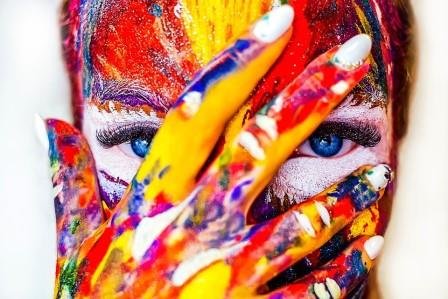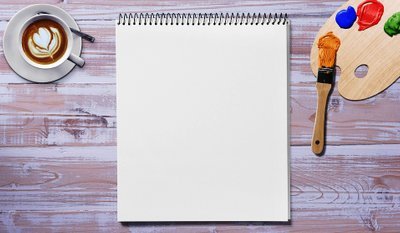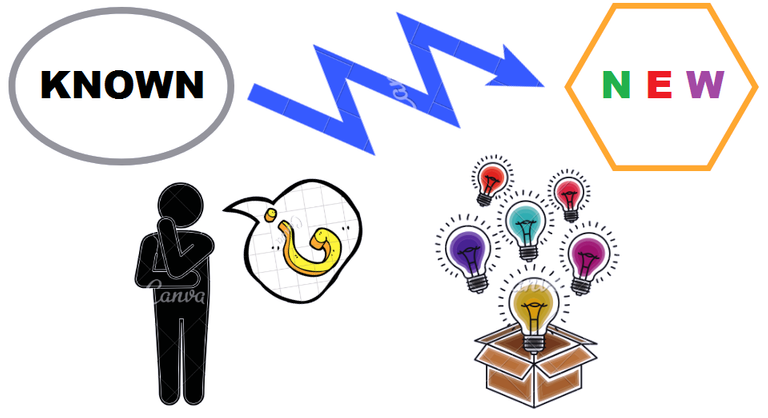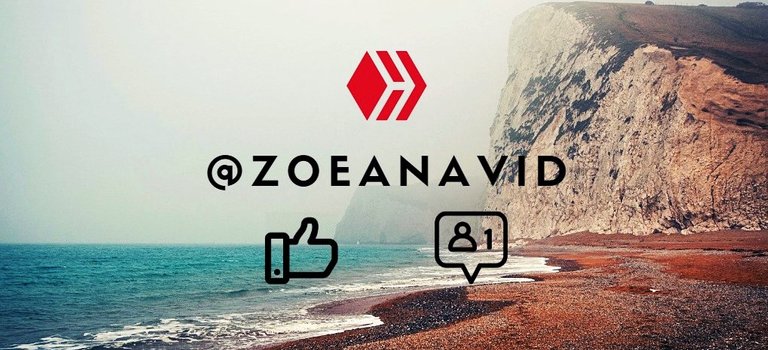.jpg)
📷
It has been argued that creativity is "the very substance of culture and human progress", being innovation, the creation of new solutions to old problems, the engine of the development of societies. This through competitiveness and the search for increasingly efficient and attractive models, methods, and systems. Furthermore, creative freedom is a human right. Creativity allows you to break with the inherited conformity while obtaining fulfillment and happiness when creating. The human being is "act and power", "reality and possibility", according to Aristotle, so it is not surprising that the creative process leads us to experience a pleasant feeling of self-realization.
Why take the time to analyze creativity? I think that to make the most of the creative process, it is important to understand its mechanisms and stages. Personally, I find myself in a situation that demands the most creative responses possible in order to adapt to the multiple and accelerated changes to which I am exposed. Perhaps you, readers, also encounter or have faced similar circumstances. That is why today I have decided to talk a bit with you about creativity, to contribute with your knowledge in this regard while I am framed in my particular scenario. So, let's get to work!
.jpg)
📷
What is creativity?
Throughout the development of psychology and the social sciences, various definitions of the term creativity have been coined. Below, I list some of them to put us in context:
- Guilford (1952): “Creativity, in a limited sense, refers to the skills that are characteristic of creative individuals, such as fluency, flexibility, originality and divergent thinking”.
- Thurstone (1952): “It is a process to form ideas or hypotheses, verify them and communicate the results, assuming that the product created is something new”.
- Obsbon (1953): “Ability to represent, anticipate and produce ideas. Converting familiar elements into something new, thanks to a powerful imagination”.
- Parnes (1962): “The capacity of finding relationships between previously unrelated ideas and that is manifested in the form of new schemes, experiences or new products”.
- Torrance (1965): “Creativity is a process that makes someone sensitive to problems, deficiencies, cracks or gaps in knowledge and leads them to identify difficulties, seek solutions, speculate or formulate hypotheses, approve and test these hypotheses, and modify them if necessary, to communicate the results”.
Taking into account what has been raised by these different authors, I propose here a definition that in my opinion is quite accurate and broad, due to its applicability to numerous scales and areas:

What follows from the definitions of creativity as a whole?
Creativity is a behavior, attitude or capacity inherent in the human being. A person is essentially creative, therefore, creativity can be developed, fortuitously or deliberately. However, from our own experience we can say that there are environments where creativity is enhanced more than in others, and that the creative product can also vary in novelty and value. Thus, several questions arise: What is new? What is valuable? For whom?
What is and what isn't creative?
Specifying the novelty and value of what is created is an elusive subject since it presents variable transcendence according to the individuals involved. Basically, what is novel and important to me may not be so to you. In his Creativity Manual, Rodríguez establishes three levels of creation as regards the significance of the creative product:
- I. Elementary level, or personal and family interest.
- II. Medium level, or of labor and professional resonance.
- III. Higher level, or transcendent and universal creation.
How and where can we create?
Having an idea of the levels at which our creative product will be novel and valuable, we must ask ourselves how and where to create, given that the life span of the human being is finite and the resources too. In short, it is not possible to know everything about everything or create new and valuable products in all existing areas 😄. To finish this publication, I invite you to do with me an exercise of self-knowledge and self-criticism to then discover our creative "niche". To develop creativity to the maximum, it is necessary to seek vocational and creative guidance. The following table presents a series of interests and shows how they correspond to certain values and activities or areas of focus.
| Personal interest | Associated value | Areas or activities |
|---|---|---|
| Know and understand | Truth | Science |
| Feel and express | Beauty | Arts |
| Act on things | Utility | Technology |
| Act on people | Goodness | Human relations |
What did you think? Did it make you consider your capabilities and possible areas of development? When it comes to getting creative, remember the words of Ortega y Gasset: «I am me and my circumstance, and if I don't save it, I won't save myself».
I hope you enjoyed these reflections on creativity! 😄 Any questions, comments, or suggestions, I will see you in the section below ✅ Until next time!
Sources:
- "El blog creativador". (2015). Definition of creativity by several authors. Available online here.
- Rodríguez, M. (2009). Creativity Manual. Psychic processes and development. Trillas Ed., México.
Content previously published in my first blog, originally in Spanish, a while ago. I share it again to generate pleasant discussion and participation, hoping it will be to your liking.

Las cosas cambiaron mucho desde que estuviste en steemit...ahora en hive es SPAM hacer dos publicaciones iguales en diferentes idiomas, te pueden dar entrada en una lista negra por esto...incluye los dos idiomas en UNA sola publicación...saludos..!
Entendido, muchas gracias por la información, no lo sabía.
La actitud es la principal motivación. Además haces un selección en autores que dan forma a tu post. Saludos
Excelente dissertation on a very complex topic. I think that platforms like this one out us to the test, while Aldo offering us plenty of possibilities for development and selfdiscovery.
Two of my teenage daughters are in the platform now and it has been interesting to see them develop their creativity and discover some of their talents. It can be a life-long process or it can be sped up in an encouraging environment.